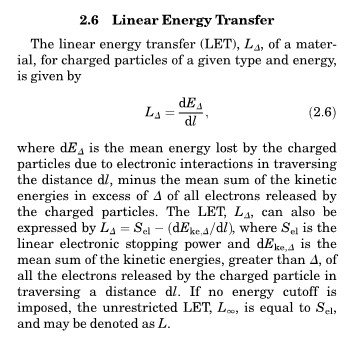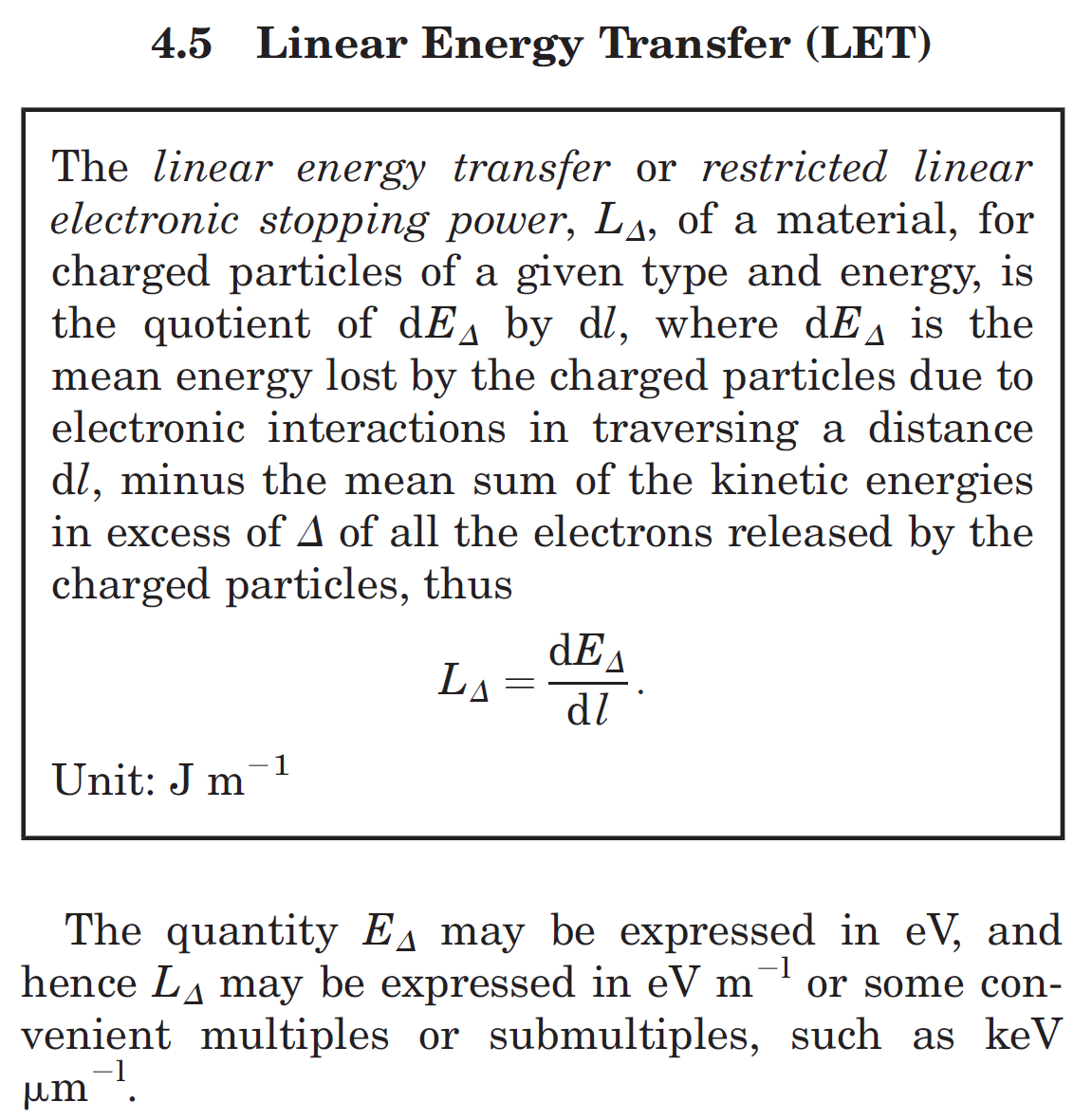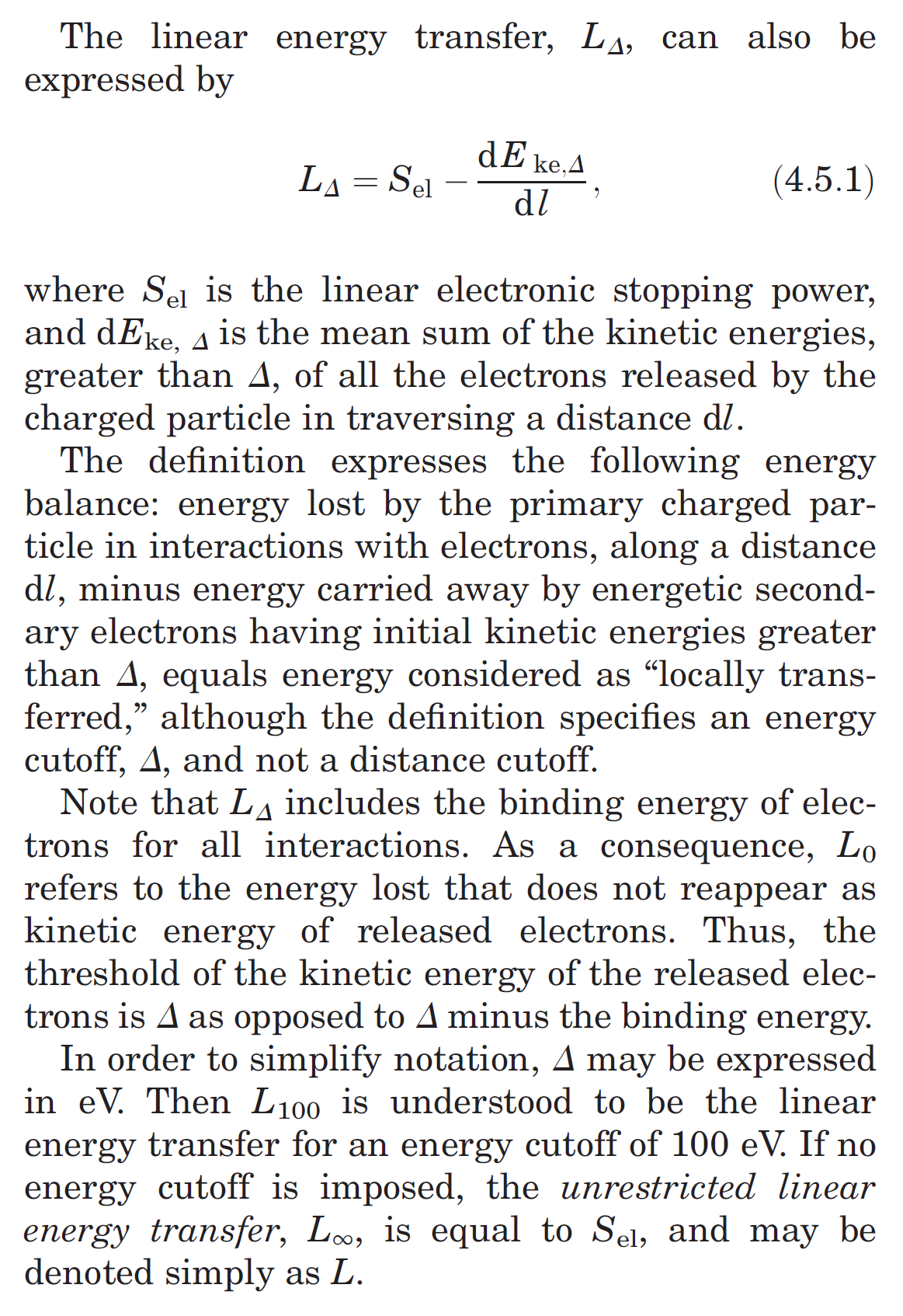In sr-niel website, the resulting effect from collision energy losses of particles traversing an absorber – e.g., a device – is discussed in terms of electronic stopping power, if not otherwise explicitly indicated. For instance, the user can find the treatment of such a physical mechanism in Chapter 2 of Leroy and Rancoita (2016) (see also references therein).
However, the energy deposited in an absorber may be lower than the energy actually lost by a particle by collision losses on atomic electrons. In fact, typical radiation detectors or devices are not thick enough to fully absorb secondary δ-rays, emitted during the process. Thus, in order to account for such an effect, one needs to define an effective detectable maximum transferred energy W0. Beyond the ionization loss minimum or for W0 ≪ 2mc2 - where m is the electron mass at rest and c the speed of light -, the energy-loss formula reduces to the so-called restricted energy-loss equation (e.g., see Sect. 2.1.1.4 in Leroy and Rancoita (2016)), which – at high energies – reaches a constant value called Fermi Plateau (for massive particles in silicon absorbers, e.g., see here ), i.e.,

where h is Planck constant and νp is the plasma frequency of the medium, A, Z and ρ are atomic weigth, atomic number and density of the medium, respectively. Finally, z is the charge number of the incoming particle (i.e., the atomic number of the fully ionized incoming particle).
One has to remark that, , in section 2.6 of ICRU-90 (2014) the linear energy transfer is currently introduced as:

While, in section 4.5 of ICRU-85 (2011) the linear energy transfer was more extensively discussed as in the following.


In addition, it is worth to note that the linear energy transfer used in dealing with SEU and SEE studies is actually the mass electronic stopping power (for instance, see Sect. 2.1.1 of Leroy and Rancoita (2016) and in Sect. 2 (page 6) of ESCC-25100 (2014)), i.e., the electronic stopping power divided by the absorber density.
References
[Leroy and Rancoita (2016)] Principles of Radiation Interaction in Matter and Detection - 4th Edition -, World Scientific. Singapore, ISBN-978-981-4603-18-8 (printed); ISBN.978-981-4603-19-5 (ebook); https://www.worldscientific.com/worldscibooks/10.1142/9167#t=aboutBook; it is also partially accessible via google books.
[ICRU-85 (2011)] ICRUM - International Commission on Radiation Units and Measurements (2011). FUNDAMENTAL QUANTITIES AND UNITS FOR IONIZING RADIATION (Revised), ICRU Report 85, Journal of the ICRU Volume 11 No 1.
[ICRU-90 (2014)] ICRUM - International Commission on Radiation Units and Measurements (2011). Key Data for Ionizing-Radiation Dosimetry: Measurement Standards and Applications, ICRU Report 90, Journal of the ICRU Volume 14 No 1.
[ESCC-25100 (2014)] SINGLE EVENT EFFECTS TEST METHOD GUIDELINES (2014), ESCC Basic Specification No. 25100 issue 2